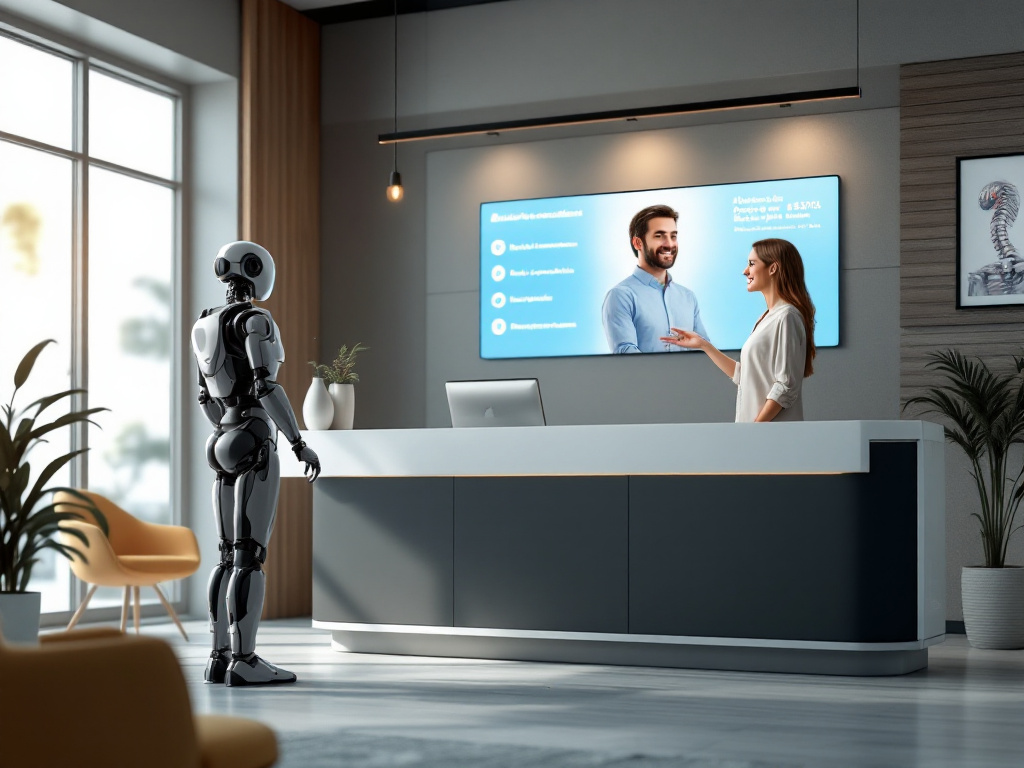Why Efficient Back Pain Consultation Booking Matters
When you streamline your back pain consultation booking process, you give your patients a more seamless experience while also freeing up time for higher-value tasks in your chiropractic practice. Back pain is one of the most frequent complaints among patients, and every moment spent in scheduling confusion can lead to missed opportunities for patient care. By focusing on more efficient booking methods, you ensure that your patients can quickly schedule their appointments, trust your practice’s organization, and feel confident that their concerns are top priority.
As a chiropractor, you know that consistent, accurate scheduling can directly impact how patients perceive your clinic. A slow or faulty booking system may cause frustration before new patients even begin treatment. A poor first impression can undermine your reputation for expertise in spinal health or chiropractic care. On the other hand, a smooth and flexible process signals that you value your patients’ time and well-being. It also projects a professional image that encourages loyalty and referrals. In turn, you reduce the stress on your administrative staff by limiting phone tag, miscommunications, and endless follow-up calls.
When your booking system is streamlined, you gain more time to dedicate to patient improvements, such as fine-tuning treatment plans or sharing helpful posture advice. You also help ensure that each patient feels personally supported. Efficient back pain consultation booking involves more than just saving minutes on the phone. It can set the tone for the entire provider–patient relationship. Ultimately, the more welcoming and accommodating your booking flow, the better positioned you are to promote long-term patient satisfaction and overall practice growth.
Embrace AI Receptionists for Chiropractic
An AI receptionist is not just a futuristic gadget. It’s a comprehensive tool that ensures every caller receives accurate, real-time scheduling assistance without human error or delay. Any time you invest in AI receptionist solutions can result in a more organized environment, freeing you to focus on the most critical part of your job: providing top-notch spinal care and pain relief.
Think of the AI receptionist as an automated extension of your front desk. When it’s integrated with your practice’s calendar, it can handle patient inquiries, cancellations, or reschedules even if they come in after hours. If a patient searches for a direct link to your back pain consultation booking page, the AI receptionist can guide them there without further intervention, reducing friction during the scheduling process. This kind of continuous availability guarantees that your practice remains open for business—even when you or your team are off the clock.
You might also appreciate how this technology can sync up with your broader practice management software. Once a patient confirms an appointment, the AI system can send a reminder and log essential details for quick reference. That means your staff won’t have to juggle spreadsheets or manually compile data. By delegating these administrative tasks to an AI receptionist, you make your entire clinic more agile. If you want to take this further, consider exploring Chiro Practice Automated Scheduling options that integrate directly with your AI tool.
Enhance Patient Engagement And Convenience
Your patients often lead busy lives filled with work, family visits, and other medical appointments. When you offer an intuitive, simple way to book consultations, you bridge the gap between their hectic schedule and your availability. A well-managed booking system builds your credibility by showing that you genuinely understand your community’s need for easy access to back pain solutions.
Automated text reminders are one way to keep patients engaged. An AI-powered booking system can automatically dispatch these updates ahead of their scheduled time, limiting forgetfulness and last-minute changes. This added convenience helps your clinic maintain a more predictable flow while giving patients gentle nudges about upcoming visits. The same technology can be used to deliver targeted messages after appointments. If someone visited your clinic for a lower back adjustment, for instance, you could automatically guide them toward a follow-up resource or request a brief satisfaction survey. This approach maintains their relationship with your clinic long after they step out the door.
When you reduce the amount of time your patients spend on hold, you immediately make a great impression. Instead of waiting for a receptionist to become free, patients can engage with an AI system that quickly confirms or modifies their booking details. You’ll also eliminate the risk of miscommunication. This timeliness and consistency can extend to next-level patient management strategies, such as a system for Pain Relief Coordination or a streamlined Chiro Front Desk Automation. Both align seamlessly with the ethos of creating a better patient experience. After all, a happier patient base is more likely to follow through on suggested treatment plans and maintain a relationship with your practice.
Optimize Scheduling For Busy Teams
Behind every successful chiropractic practice is a devoted team that keeps the engine running. Yet, between fielding calls from prospective patients and addressing everyday tasks, your staff can become overwhelmed. That’s where AI-driven scheduling comes in. By giving your administrative team fewer scheduling tasks to juggle, you create a workplace environment focused on top-quality care instead of phone tag.
One way to integrate AI is to have it function as a triage system, answering basic inquiries for back pain consultation booking while immediately routing more complex questions to a staff member. This approach frees up your trained professionals to handle more sensitive or specialized patient needs. If you’re thinking about exploring more advanced tools, you may want to research Chiro Staff Scheduling AI, which efficiently manages shift changes and workforce needs across multiple practitioners.
Additionally, an automated system can seamlessly coordinate follow-ups, such as routine check-ins for patients who completed a recent spinal adjustment. Rather than relying on manual reminders that risk being overlooked, the AI tool can queue and send these follow-ups at set intervals. These little touches help your practice maintain consistent communication with current patients, ensuring they never feel ignored or forgotten. Over time, you’ll see a reduction in rescheduling chaos, plus you’ll have a clear bird’s-eye view of your overall appointment flow.
When your team is not chained to a phone line, you open the door for them to hone their skills or provide that warm personal touch when patients arrive. You can empower them to handle more urgent queries, handle payment processing without error, and ensure your practice’s quality standards remain consistent. Ultimately, automated scheduling can serve as an investment in workforce happiness. With less time glued to administrative duties, your team can sharpen their professional development and offer more personalized patient interactions.
Address Common Challenges With AI
While AI-based systems can solve many scheduling woes, it’s worth discussing some common challenges your chiropractic practice might face in the process. For example, you may worry about losing the human touch if a chatbot or automated receptionist handles most of your patient communications. It’s a legitimate concern, as you’ve built your reputation on personalized care. But AI can still be warm and supportive. By carefully designing your AI’s messaging and voice, you strike the right balance between efficiency and empathy. For questions too complex or emotional for a virtual agent, you can configure the system to escalate seamlessly to a live staff member.
Patient privacy is another hurdle. In the healthcare industry, protecting patient data is a top priority. That means any AI tool you use needs robust security protocols. With a secure system, data remains encrypted, ensuring your patients have no reason to question whether their confidential details are at risk. If you do face privacy or compliance questions, consult experts who understand healthcare regulations. Many AI platforms are already designed with these standards in mind, minimizing the burden on your practice.
No-shows and scheduling gaps remain an ongoing frustration for many clinics. Even with smart tools, it’s still possible that patients forget or skip appointments. However, AI’s automated reminders and confirmations can significantly reduce these incidents. A helpful addition is building a rebooking framework. For example, if a patient happens to cancel at the last minute, your AI tool could automatically alert someone on your waitlist about the newly opened time slot. These processes can be further refined by exploring Chiro Waitlist Automation or a sophisticated method to reduce cancellations, such as Chiro No Show Reduction.
Finally, consider that some patients aren’t comfortable with technology. This is where you build an inclusive strategy. While your AI system covers the bulk of scheduling tasks, you can still offer phone support or in-person assistance for those who prefer a traditional approach. Over time, as patients become more accustomed to your AI’s helpfulness, you might see them shift toward that faster, more direct option for booking appointments.
Practical Steps To Implement AI
Transition starts with evaluating your current practice management setup. Begin by mapping out every stage of your back pain consultation booking process, from initial phone calls to reminder notifications. Next, you’ll want to investigate AI platforms that fit your clinic’s flow, ensuring they have features like automated texting, calendar integration, and possibly insurance verification. If verifying insurance coverage for back pain treatments is a common bottleneck, you might explore specialized solutions like Chiro Insurance Verification AI.
Once you decide on the right platform, gather your team for a thorough briefing. Clearly outline how this system will interact with existing protocols. Clarify which tasks it takes off their plate (such as scheduling, patient data entry, or confirmation calls) and where human intervention remains vital (like complex billing questions or deeply personal patient concerns). Training is crucial. Even if the platform claims to be “plug and play,” a period of adaptation is normal. Encourage your staff to voice any confusion, so they develop confidence in the tool as well.
Another important step is integrating your new AI system into your marketing and patient outreach strategies. Let potential or returning patients know they can schedule appointments online any time. If your AI receptionist enables them to complete essential intake forms digitally, highlight that benefit. You can also tie these improvements into broader efforts at Spinal Health Marketing Automation. By communicating clearly and authentically, you reassure your community that this shift is designed to serve them better, not to replace personal interactions.
After your AI receptionist is up and running, remember to measure its effectiveness. Look at key metrics: Has your daily volume of phone inquiries dropped? Are you seeing fewer scheduling errors? What about patient feedback—has it improved because of shorter wait times? By reviewing these outcomes, you can continue to refine the platform’s settings for even smoother coordination across your clinic. Periodically reassess whether adding specialized solutions, such as Chiro Treatment Plan Coordination or Spinal Progress Tracking Automation, might be beneficial. Each step you take further cements your practice’s commitment to cutting-edge patient care.
Recap And Next Steps
When you streamline this critical step of your workflow, you reduce administrative hassles while improving patient satisfaction. From adopting an AI receptionist to automating follow-up messages, your practice gains reliability and consistency that reflect positively on your brand. You trim wasted time and ensure your staff can operate at the peak of efficiency. The end result? A practice that is well regarded, easily accessible, and ready to deliver top-tier spinal care for everyone who walks through your doors.
Below is a quick recap of what can help you level up your back pain consultation booking:
- Adopt an AI receptionist to handle scheduling and after-hours calls.
- Offer automated reminders to keep patients engaged and to lower no-show rates.
- Integrate AI with your existing practice management system so data flows seamlessly.
- Provide an alternative for patients less familiar with digital tools, preserving personal touches.
- Continuously measure and refine your system, upgrading to solutions like Chiro No Show Reduction or Chiro Staff Scheduling AI when needed.
Once you apply these strategies, your chiropractic office can handle more patient appointments without sacrificing the compassion and expertise that define your work. Whether you’re a solo practitioner or part of a large clinic, an optimized approach to back pain consultation booking keeps you in control of your schedule and your success. By freeing up more hours to spend on patient care, you’ll deliver the precise attention that patients need to stay aligned, recover faster, and maintain long-term spinal health.
The next step is up to you. Consider how these AI-powered solutions might fit into your current operations. Have an open discussion with your team about their top scheduling challenges. Then, take the leap by testing a small-scale rollout of an AI receptionist for a few days or weeks. As you monitor the immediate improvements in workflow, keep looking for additional ways to scale, such as implementing Chiro Patient Retention AI. You’ll find it’s rewarding to see your practice become more accessible, efficient, and appreciated by your community.
Remember that every time you successfully lower barriers to scheduling, you’re improving patient lives. A smooth booking system is often the first step to lasting relief from back pain, setting the stage for successful spinal adjustments, proper rehab, and ongoing wellness. Start now, and you’ll soon witness how advanced automation leads to a thriving practice committed to both innovation and patient-centered care.








Leave a Reply